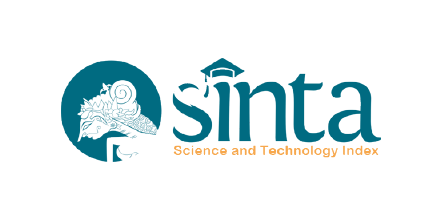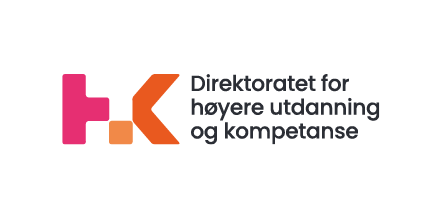Where are we now? The State of Self-employment and Entrepreneurship for People with Disabilities in Indonesia
DOI:
https://doi.org/10.21776/ub.ijds.2019.006.02.15Keywords:
self-employment, entrepreneurship, disability, literature reviewAbstract
There are more entrepreneurs from the community of people with disabilities than people without disabilities in Indonesia. However, many are working in informal sector, which lead to lower income gain. As a country that has ratified CRPD, Indonesia is required to promote entrepreneurship and self-employment among people with disabilities while ensuring equal opportunity to participate in employment. What has been done so far? How has the condition changed since CRPD ratification in 2011? What are the challenges faced by entrepreneurs with disability in Indonesia? This paper presents a review of existing literature to understand the current state of research on self-employment and entrepreneurship of people with disabilities in Indonesia. The review suggests that national and regional law created to ensure promotion of entrepreneurship for people with disabilities have not yet been implemented optimally.
References
Adioetomo, S.M., Mont, D., Irwanto. (1994). Persons with Disabilities in Indonesia: Empirical Facts and Implications for Social Protection Policies. Jakarta: TNP2K, Government of Indonesia.
Asrianti, T. (2011, October 19). RI Ratifies UN Convention on Rights of Persons with Disabilities. Retrieved from http://aseanidpp.org/sites/default/files/jakarta_post_article_a.pdf
Barnes, C. (2000). A working social model? Disability, work and disability politics in the 21st century. Critical social policy, 20(4), 441-457.
Boylan, A., & Burchardt, T. (2003). Barriers to self-employment for disabled people. London, UK: SBS Research & Evaluation.
Castillo, Y. A., & Fischer, J. M. (2019). Self-Employment as Career Choice for People with Disabilities: Personal Factors that Predict Entrepreneurial Intentions. Journal of Rehabilitation, 85(1).
Callahan, M., Shumpert, N., & Mast, M. (2002). Self-employment, choice and self-determination. Journal of Vocational Rehabilitation, 17(2), 75-85.
Colling, K., & Arnold, N. (2007). A qualitative analysis of the potential for collaboration between vocational rehabilitation agencies and small business developers. Journal of Applied Rehabilitation Counseling, 38(2), 35.
Conroy, J. W., Ferris, C. S., & Irvine, R. (2010). Microenterprise options for people with intellectual and developmental disabilities: An outcome evaluation. Journal of Policy and Practice in Intellectual Disabilities, 7(4), 269-277.
De Klerk, T. (2008). Funding for self-employment of people with disabilities. Grants, loans, revolving funds or linkage with microtinance programmes. Leprosy review, 79(1), 92-109.
Doyel, A. W. (2002). A realistic perspective of risk in self-employment for people with disabilities. Journal of vocational rehabilitation, 17(2), 115-124.
Economic and Social Commission for Asia and the Pacific (ESCAP). (2015). Disability at A Glance 2015: Strengthening Employment Prospects for Persons with Disabilities in Asia and the Pacific. Bangkok: United Nations. ST/ESCAP/2736.
Edwards, N. (2014). Disability rights in Indonesia? Problems with ratification of the United Nations Convention on the Rights of Persons with Disabilities. Australian Journal of Asian Law, 15(1).
Ferraina, S. (2012). Analysis of the Legal Meaning of Article 27 of the UN CRPD: Key Challenges for Adapted Work Settings.
Gouskova, E. (2012). Self-employment among people with disabilities: Evidence from the current population survey. Available at SSRN 2175687.
Halabisky, D. (2014). Entrepreneurial activities in Europe - Entrepreneurship for people with disabilities. Surrey, UK: OECD Publishing.
Halimatussadiah, A., Agriya, M., Nuryakin, C.(2015). Persons with disabilities (PWD) and labor force in Indonesia: A preliminary study. Development, 17(18), 19.
Harpur, P. (2012). Embracing the new disability rights paradigm: the importance of the Convention on the Rights of Persons with Disabilities, Disability & Society, 27(1), 1-14, DOI: 10.1080/09687599.2012.631794
Harpur, P., & Bales, R. (2010). The positive impact of the convention on the rights of persons with disabilities: a case study on the South Pacific and lessons from the US experience. Northern Kentucky Law Review, 37, 363.
Hwang, S. K., & Roulstone, A. (2015). Enterprising? Disabled? The status and potential for disabled people's microenterprise in South Korea. Disability & Society, 30(1), 114-129.
Indonesian Banking Development Institute (LPPI). (2015). Profil Bisnis Usaha Mikro, Kecil dan Menengah (UMKM). Jakarta.
Indonesia Bureau of Statistic (BPS). (2017). Agustus 2017: Tingkat pengangguran terbuka (TPT) sebesar 5,50 persen. Retrieved from https://www.bps.go.id/pressrelease/2017/11/06/1377/agustus-2017--tingkat-pengangguranterbuka--tpt--sebesar-5-50-persen.html.
Indonesia Bureau of Statistic (BPS). (2016). Indonesia Labor Force Survey (SAKERNAS). Retrieved from https://microdata.bps.go.id/mikrodata/index.php/catalog/728.
Indonesia Bureau of Statistic (BPS). (2015). Intercensal Population Survey (SUPAS). Retrieved from https://bps.go.id/website/pdf_publikasi/Penduduk-Indonesia-hasil-SUPAS-2015_rev.pdf.
Indonesia Disability Convention Team. (2017). Indonesia shadow report: Implementation of the United Nations Convention on the Rights of Persons with Disabilities. Indonesia: Indonesia Disability Convention Team.
Indonesia Ministry of Trade (KEMENDAGRI). Undang-Undang Republik Indonesia Nomor 8 Tahun 2016 Tentang Penyandang Disabilitas. Retrieved from http://www.kemendagri.go.id/media/documents/2016/05/11/u/u/uu_nomor_8_tahun_2016. pdf.
Institute for Economic and Social Research Faculty of Economics and Business University of Indonesia (LPEM FEB UI). (2016). Lembar fakta: Menuju inklusifitas penyandang disabilitas di pasar kerja Indonesia. Retrieved on 11 January 2018 from http://www.lpem.org/wp-content/uploads/2016/12/Lembar-fakta-rev5.pdf.
Irwanto & Thohari, S. (2017). Understanding CRPD implementation in Indonesia. In D. L. Cogburn & T. K Reuter (Eds.), Making disabilityrights real in Southeast Asia (pp. 91-118). Lanham : Lexington Books.
Jones, M. K., & Latreille, P. L. (2011). Disability and self-employment: Evidence for the UK. Applied Economics, 43(27), 4161-4178.
Kitching, J. (2014). Entrepreneurship and self-employment by people with disabilities. Background Paper for the OECD Project on Inclusive Entrepreneurship. Retrieved from http://www.oecd.org/cfe/leed/background-report-people-disabilities.pdf
Le, A. T. (1999). Empirical studies of selfâ€employment. Journal of Economic surveys, 13(4), 381-416.
Maritz, A., & Laferriere, R. (2016). Entrepreneurship and self-employment for people with disabilities. Australian Journal of Career Development, 25(2), 45-54.
Mizunoya, S., & Mitra, S. (2013). Is there a disability gap in employment rates in developing countries?. World Development, 42, 28-43.
Pagán, R. (2009). Self employment among people with disabilities: evidence for Europe. Disability & Society, 24(2), 217-229.
Parker Harris, S., Caldwell, K., & Renko, M. (2014). Entrepreneurship by any other name: Self-sufficiency versus innovation. Journal of social work in disability & rehabilitation, 13(4), 317-349.
Prescott-Clarke, P. (1990). Employment and handicap (Vol. 1036). London: Social and Community Planning Research.
PERDA DIY - Peraturan Daerah Provinsi Daerah Istimewa Yogyakarta. (2012). Peraturan Daerah (PERDA) tentang Perlindungan dan Pemenuhan Hak-Hak Penyandang Disabilitas. Retrieved from https://peraturan.bpk.go.id/Home/Details/25643.
Renko, M., Parker Harris, S., & Caldwell, K. (2016). Entrepreneurial entry by people with disabilities. International Small Business Journal, 34(5), 555-578.
Rizzo, D. C. (2002). With a little help from my friends: Supported self-employment for people with severe disabilities. Journal of vocational rehabilitation, 17(2), 97-105.
Rosdianti, Y. (2018). The right to work in article 27 of the UN Convention On The Rights of Persons With Disabilities: Towards an inclusive employment. Negara Hukum: Membangun Hukum untuk Keadilan dan Kesejahteraan, 9(2), 235-252.
Schumpeter, J. A. (2000). Entrepreneurship as innovation. Entrepreneurship: The Social Science View, 1, 51-75.
Smart, J. (2008). Disability, society and the individual. Austin, TX: Pro Ed.
Suwarti, A., Hindasah, L. (2018). Entrepreneurship for empowerment persons with disabilities in Yogyakarta province. Advances in Engineering Research, 172.
OECD. (2010). Sickness, disability and work: Breaking the barriers. Stockholm, Sweden: OECD Publishing.
UN General Assembly. (2007). Convention on the Rights of Persons with Disabilities: resolution / adopted by the General Assembly. Retrieved from https://www.refworld.org/docid/45f973632.html
Wehman, P., Griffin, C., & Hammis, D. (2003). Is self-employment a cop-out. Journal of Vocational Rehabilitation, 18(1), 143-144.
Yamamoto, S., Unruh, D., & Bullis, M. (2011). The viability of self-employment for individuals with disabilities in the United States: A synthesis of the empirical-research literature. Journal of Vocational Rehabilitation, 35(2), 117-127.
Yamamoto, S. H., & Alverson, C. Y. (2013). Successful vocational outcomes: A multilevel analysis of self-employment through US vocational rehabilitation agencies. Journal of Vocational Rehabilitation, 38(1), 15-27.
Downloads
Published
How to Cite
License
Copyright (c) 2019 Dissa Syakina Ahdanisa

This work is licensed under a Creative Commons Attribution-NonCommercial 4.0 International License.















